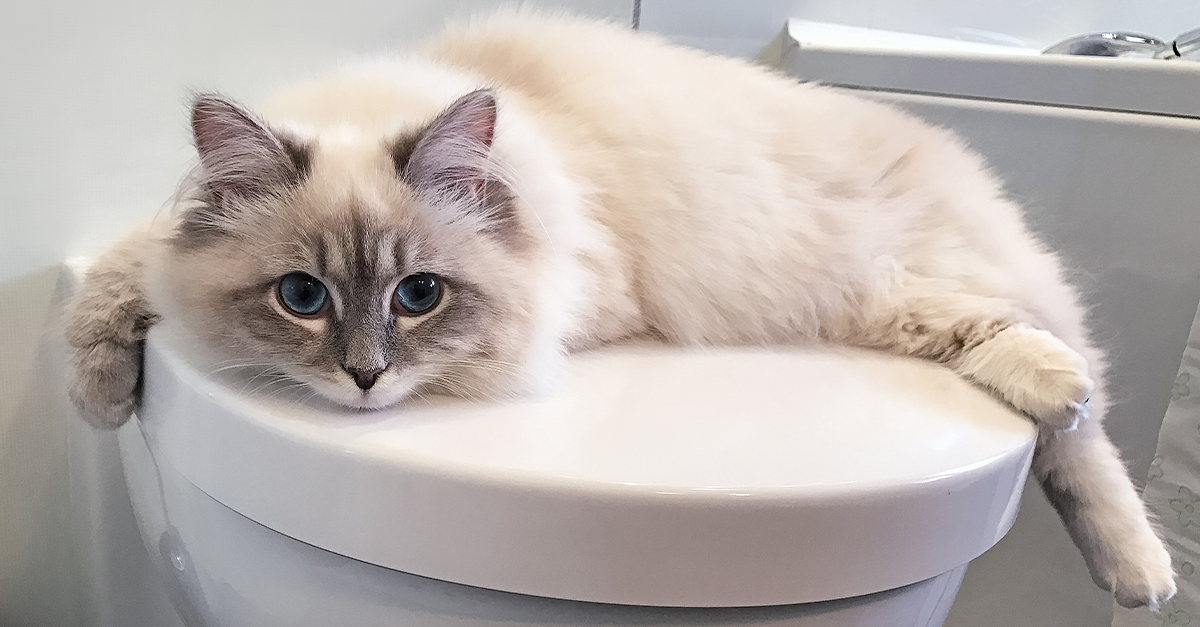What're your opinions about Don’t flush cat feces down the toilet?

Intro
As feline proprietors, it's necessary to bear in mind exactly how we throw away our feline buddies' waste. While it may appear convenient to purge feline poop down the bathroom, this practice can have detrimental effects for both the atmosphere and human health.
Ecological Impact
Flushing feline poop presents unsafe pathogens and bloodsuckers right into the supply of water, posturing a significant danger to marine ecosystems. These contaminants can adversely impact marine life and concession water quality.
Wellness Risks
In addition to ecological worries, flushing feline waste can also posture health and wellness threats to people. Cat feces might include Toxoplasma gondii, a bloodsucker that can cause toxoplasmosis-- a possibly severe ailment, particularly for expectant women and people with weakened body immune systems.
Alternatives to Flushing
Thankfully, there are more secure and much more liable ways to take care of cat poop. Take into consideration the following options:
1. Scoop and Dispose in Trash
One of the most typical approach of dealing with pet cat poop is to scoop it into a naturally degradable bag and toss it in the trash. Make sure to make use of a devoted trash inside story and deal with the waste immediately.
2. Usage Biodegradable Litter
Choose eco-friendly cat trash made from products such as corn or wheat. These clutters are environmentally friendly and can be safely thrown away in the garbage.
3. Bury in the Yard
If you have a lawn, think about hiding pet cat waste in a designated area far from vegetable gardens and water resources. Make sure to dig deep sufficient to avoid contamination of groundwater.
4. Set Up a Pet Waste Disposal System
Buy a pet waste disposal system specifically developed for pet cat waste. These systems make use of enzymes to break down the waste, reducing odor and ecological effect.
Conclusion
Accountable pet possession extends beyond providing food and sanctuary-- it also involves correct waste monitoring. By refraining from flushing pet cat poop down the commode and going with alternative disposal methods, we can decrease our ecological impact and shield human wellness.
Why Can’t I Flush Cat Poop?
It Spreads a Parasite
Cats are frequently infected with a parasite called toxoplasma gondii. The parasite causes an infection called toxoplasmosis. It is usually harmless to cats. The parasite only uses cat poop as a host for its eggs. Otherwise, the cat’s immune system usually keeps the infection at low enough levels to maintain its own health. But it does not stop the develop of eggs. These eggs are tiny and surprisingly tough. They may survive for a year before they begin to grow. But that’s the problem.
Our wastewater system is not designed to deal with toxoplasmosis eggs. Instead, most eggs will flush from your toilet into sewers and wastewater management plants. After the sewage is treated for many other harmful things in it, it is typically released into local rivers, lakes, or oceans. Here, the toxoplasmosis eggs can find new hosts, including starfish, crabs, otters, and many other wildlife. For many, this is a significant risk to their health. Toxoplasmosis can also end up infecting water sources that are important for agriculture, which means our deer, pigs, and sheep can get infected too.
Is There Risk to Humans?
There can be a risk to human life from flushing cat poop down the toilet. If you do so, the parasites from your cat’s poop can end up in shellfish, game animals, or livestock. If this meat is then served raw or undercooked, the people who eat it can get sick.
In fact, according to the CDC, 40 million people in the United States are infected with toxoplasma gondii. They get it from exposure to infected seafood, or from some kind of cat poop contamination, like drinking from a stream that is contaminated or touching anything that has come into contact with cat poop. That includes just cleaning a cat litter box.
Most people who get infected with these parasites will not develop any symptoms. However, for pregnant women or for those with compromised immune systems, the parasite can cause severe health problems.
How to Handle Cat Poop
The best way to handle cat poop is actually to clean the box more often. The eggs that the parasite sheds will not become active until one to five days after the cat poops. That means that if you clean daily, you’re much less likely to come into direct contact with infectious eggs.
That said, always dispose of cat poop in the garbage and not down the toilet. Wash your hands before and after you clean the litter box, and bring the bag of poop right outside to your garbage bins.
https://trenchlesssolutionsusa.com/why-cant-i-flush-cat-poop/

I hope you liked our article on Can You Flush Cat Poo or Litter Down the Toilet?. Thank you for taking a few minutes to read our piece of content. Loved our piece of writing? Please share it. Help other people find it. Many thanks for your time. Please pay a visit to our site back soon.
Visit Link